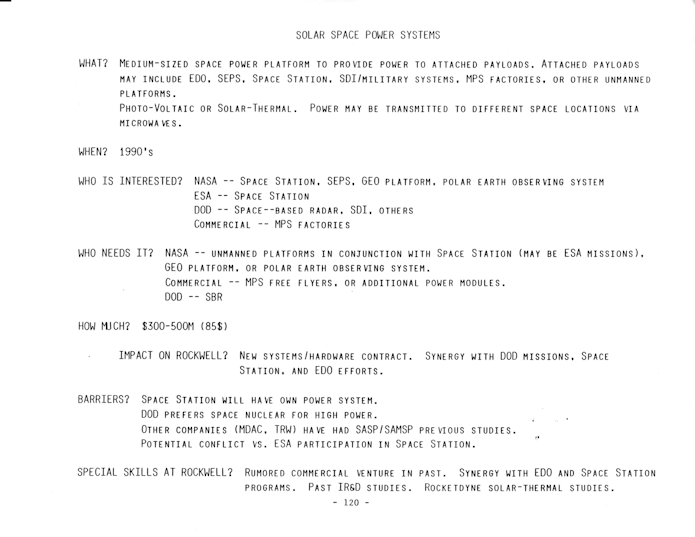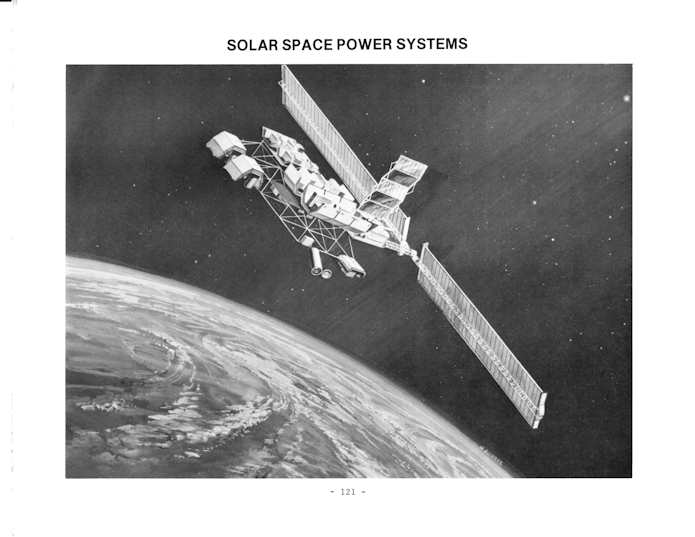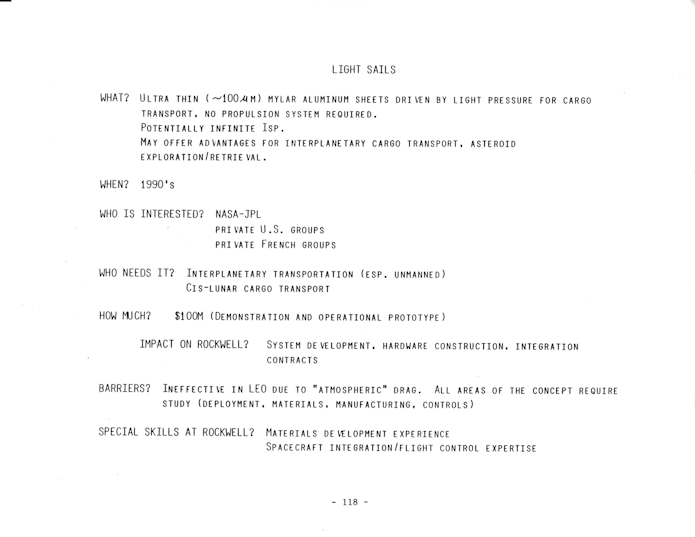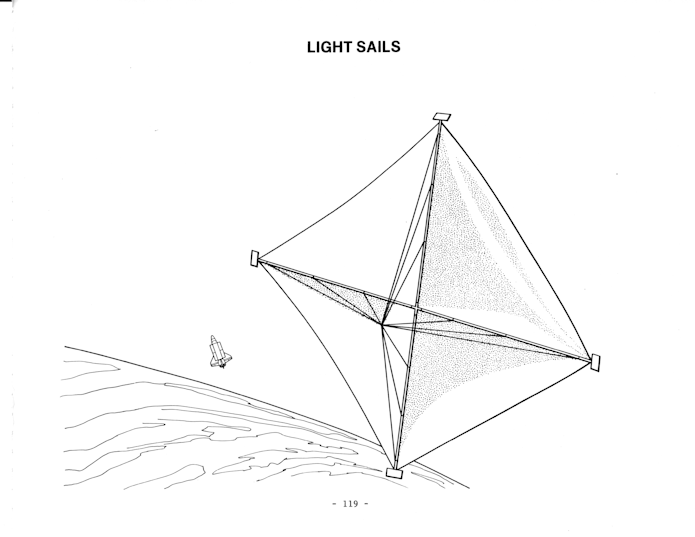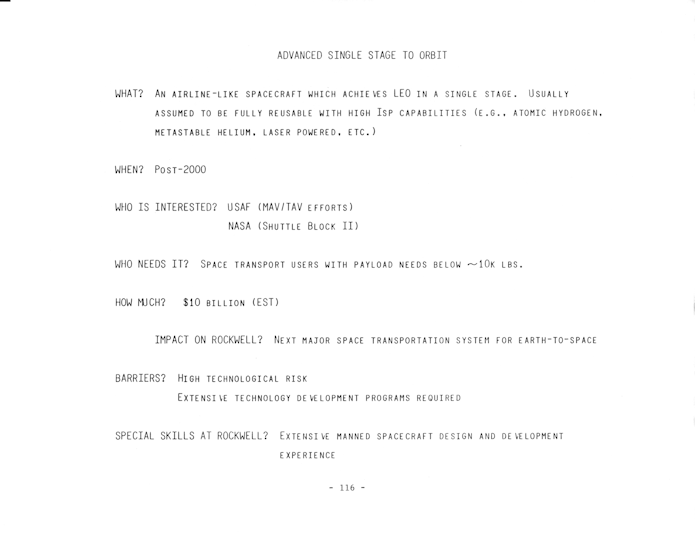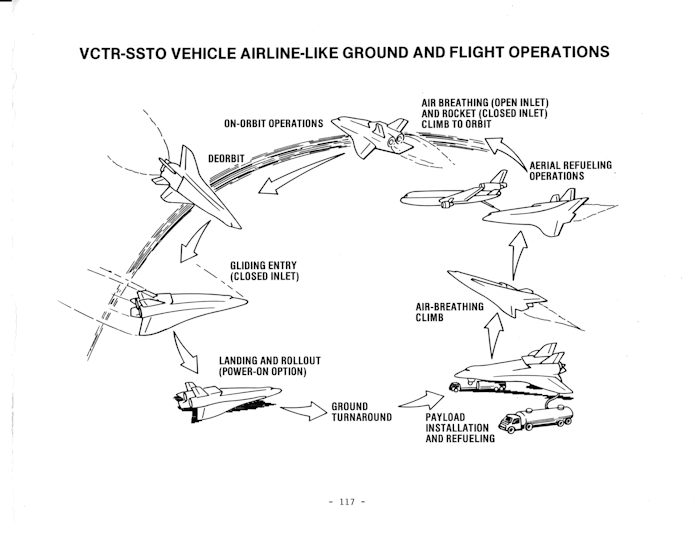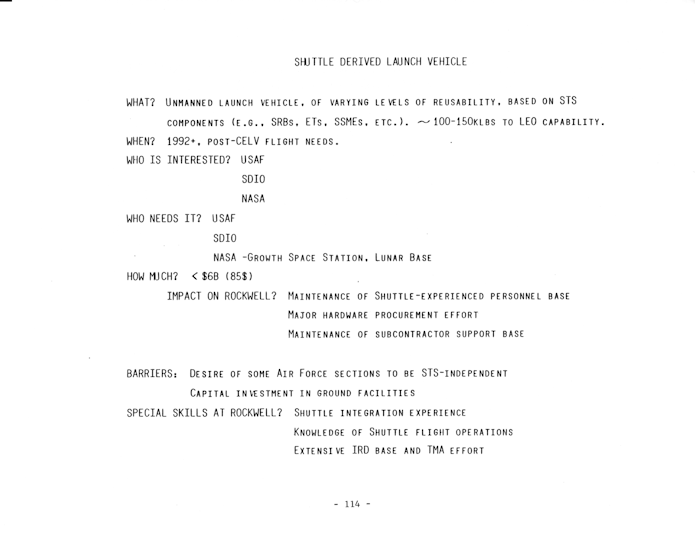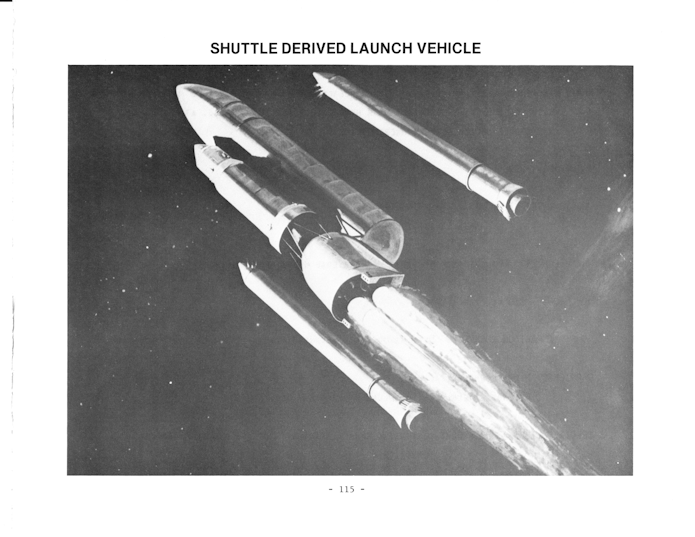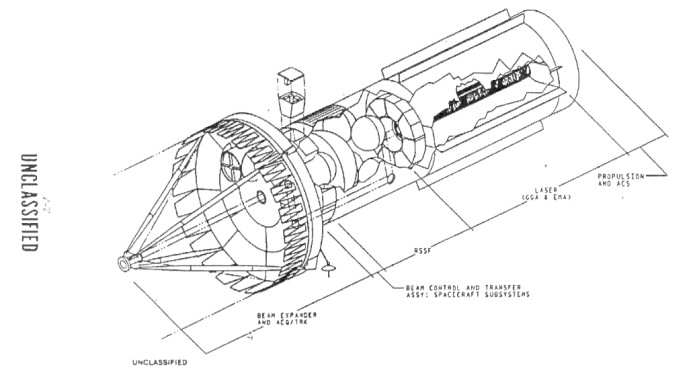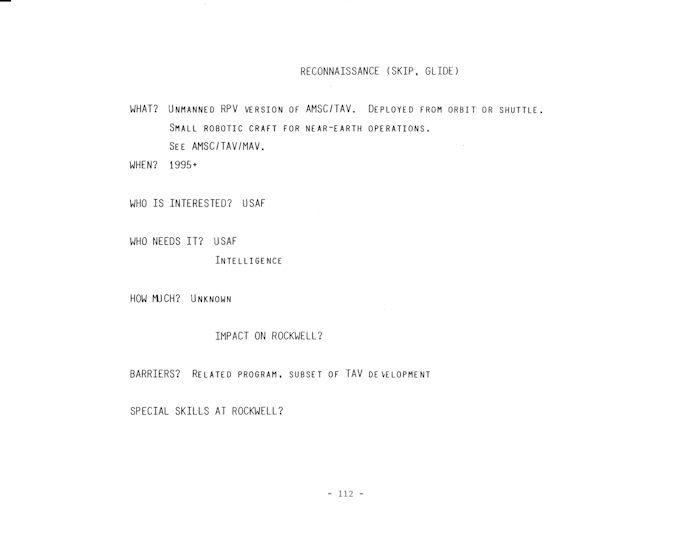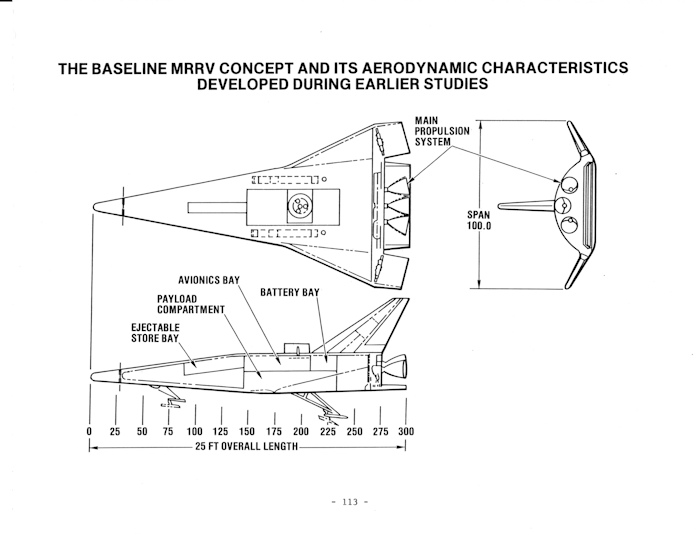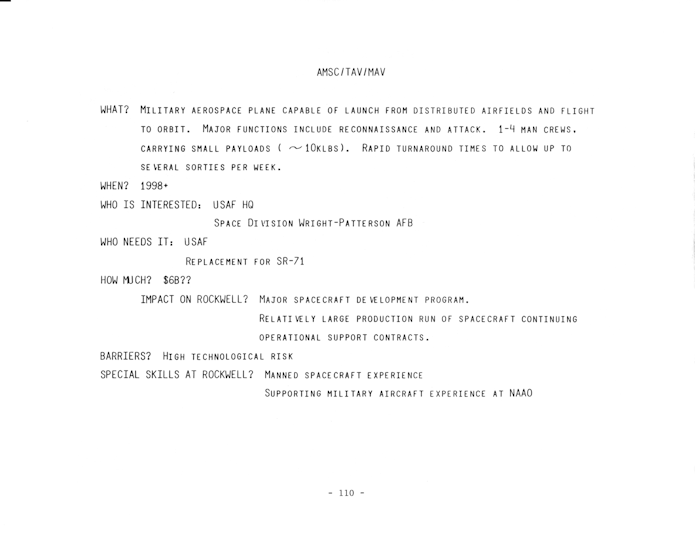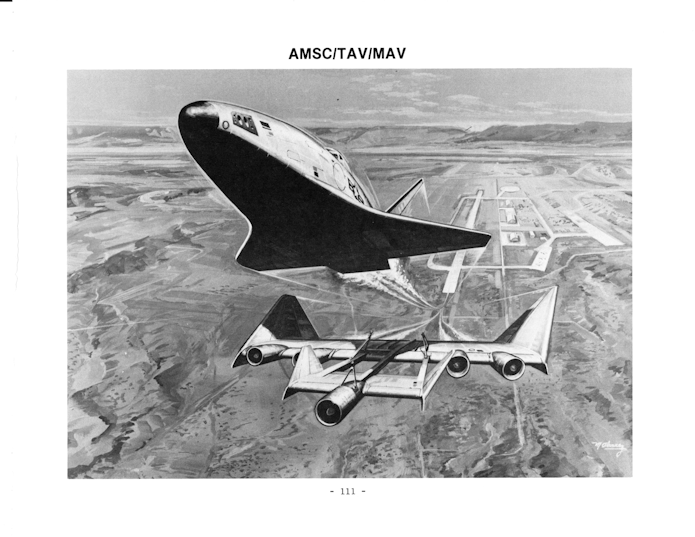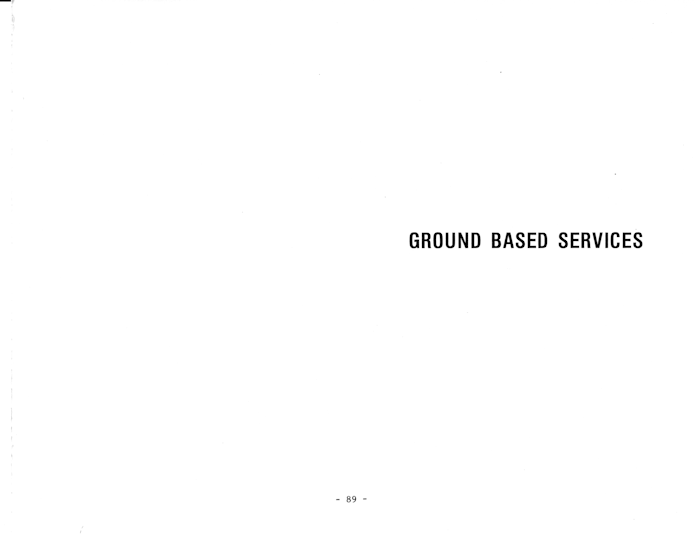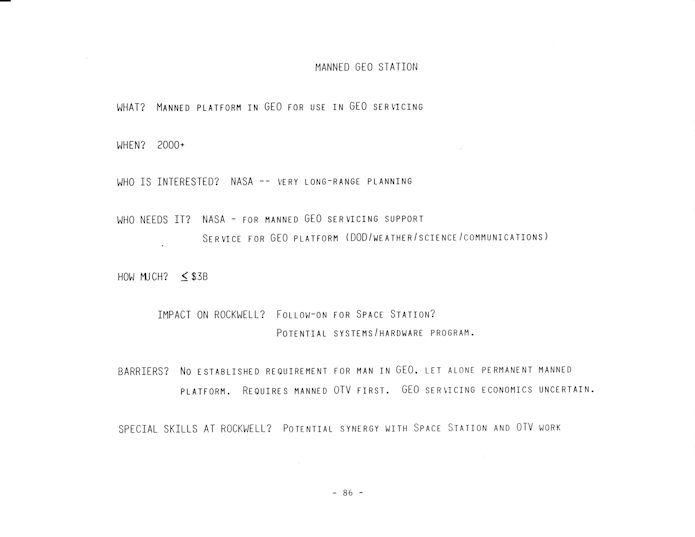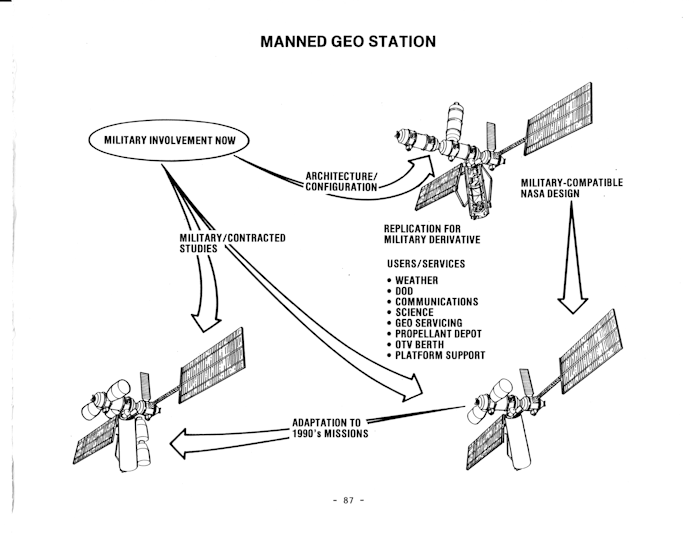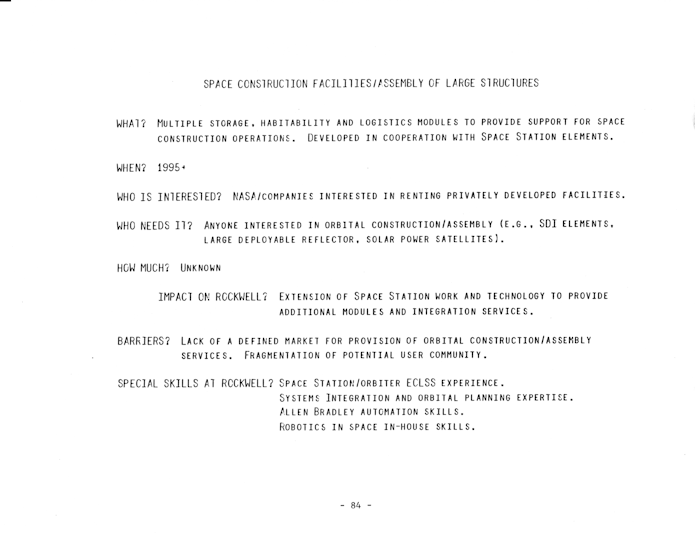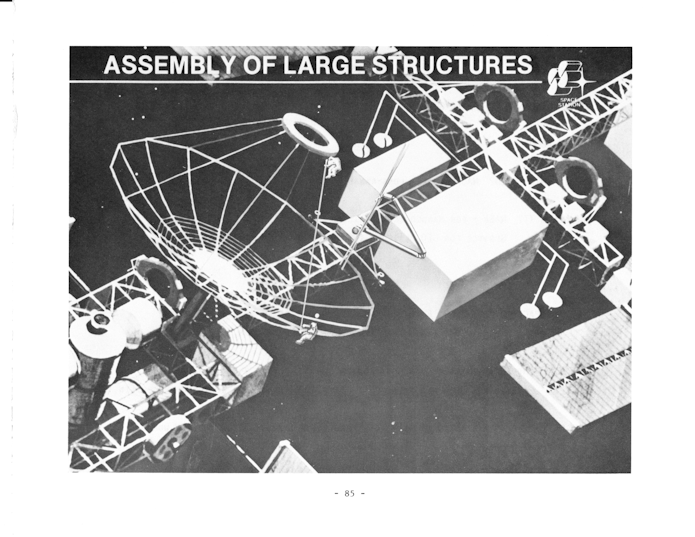In 1985, Rockwell International thought there might be a business case for commercialized space solar power systems. This could be akin to a miniaturized version of the Solar Power Satellite… while it looks like the normal approach would be a more or less conventional solar power systems simply attached to a customer payload, the possibility existed of remote systems that beamed energy to customers with microwaves.
In 1985, Rockwell ponders the business case for solar sails. Solar Sails, or “light sails,” had been around for a couple decades at that point, though purely as hypothetical constructs. Solar sails would really only be useful for interplanetary transits, which would of course limit the number of potential customers.
In 1985, Rockwell International considered the business case of an advanced single stage to orbit vehicle. The design illustrated was a manned, winged horizontal launched, horizontal landing design with, oddly, air inlets on the upper surface. Unlike the “Orient Express” or NASP designs of the time, this design was not meant to lift off and accelerate to Ludicrous Speed using scramjets, but was to lift off and rather sedately rendezvous with a tanker aircraft. This… is a bit familiar.
In the late 1990’s I worked for Pioneer Rocketplane. Our plan was to design and build a spaceplane that would lift off from a runway under turbojet power, with fuel tanks full of RP-1 and oxidizer tanks full of very little. The vehicle would rendezvous with a tanker aircraft which would transfer not jet fuel, but liquid oxygen. This is because for best performance an RP-1/LOX rocket system needs a far greater mass of LOX than RP-1. So leaving the LOX tank basically empty (a small amount was carried to keep the tank pressurized and chilled) would allow the vehicle to lift off at lowest practical mass. This lowered the mass needed for the landing gear, and lowered the surface area needed for the wings, which of course lowered the mass of the wings. The rocketplane would tank up, separate from the tanker and fire its rocket engine. In the case of the Pioneer Rocketplane “Pathfinder,” the spaceplane would reach orbital altitude, but not orbital velocity. An upper stage would boot the payload into orbit; the spaceplane would return home, either gliding or under jet power. The Rockwell design illustrated below *seems* to have been meant to operate in a similar fashion, but with the spaceplane intended to put itself directly into orbit. Most likely it would have been LH2/LOX powered, probably with SSME derivative engines.
The description in the text, though, describes very different vehicles, using propulsion system best described as highly steeped in the hypothetical. Atomic hydrogen and metastable helium are great stuff if you can get them… and, basically, you can’t. Not with 1980’s tech, not with 2020 tech. Someday, maybe.
In 1985, Rockwell International contemplated the business case for Shuttle Derived Launch Vehicles. The specific design illustrated used the ET and SRB’s more or less stock, but the orbiter was replaced with a recoverable propulsion and avionics module. The payload came in the form of an upper stage with something very like the Apollo Command and Service Modules. This would probably have been for a lunar mission of some kind as a Shuttle-class booster is too big for a simple capsule mission to LEO. The basic design would have roughly performed like the presumably forthcoming SLS.
In 1985 Rockwell thought that there might be a business case for a small unmanned spaceplane for recon purposes. At the time, the answer was apparently no… but within a few years Rockwell developed the “REFLY” spaceplane which, over a span of a couple decades, transmorgified into the X-37B which has flown a handful of top secret long duration missions.
In the 1980’s, military spaceplanes were all the rage… at least on paper. In 1985 Rockwell International considered the possibility that there would be a profitable business case for a relatively small manned spaceplane that could serve as a rapid-reaction launch system for missions such as recon. Thirty years later the X-37 finally accomplished something sorta along those lines, though without the crew and rapid reaction.
Continuing the report into a less interesting section, that of ground based services that in 1985 Rockwell thought might be profitable. these ideas included STS Marketing Services, Consolidated Space Operations Center, DOD “Schedule C,” Payload Certification from NASA, Commercial Payload Software Services, Commercial ASE Services, and Turn Key Launch Services.
Up next: More Interesting Stuff.
More after the break…
In 1985 Rockwell – perhaps half-heartedly – suggested the possibility of a business case for a manned station in geosynchronous orbit. The station would be used to service satellites in GEO. While an interesting notion, satellites in GEO relatively rarely require any actual servicing; the three billion dollars Rockwell expected such a system would cost (and let’s face it, the cost would doubtless balloon) would likely far outweigh the cost of simply replacing the satellites.
In 1985, Rockwell considered that there might be a market for space construction facilities for large orbital structure such as solar power satellites, large radio/radar antenna, SDI “elements” (likely references the relatively gigantic neutral particle beams, space based lasers and other “space guns” that were contemplated at the time) and other large structures. This capability was first contemplated in the mid 70’s for the SPS program, but did not really last much past the late 80’s when such vast structures were no longer really expected anytime soon.
